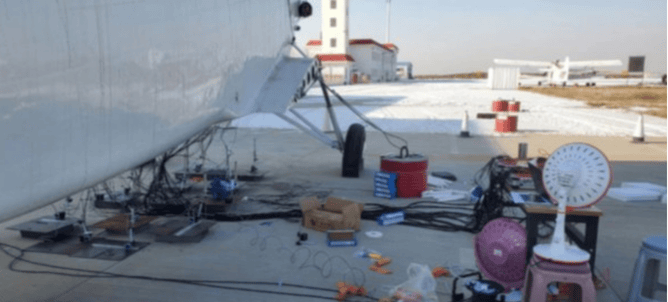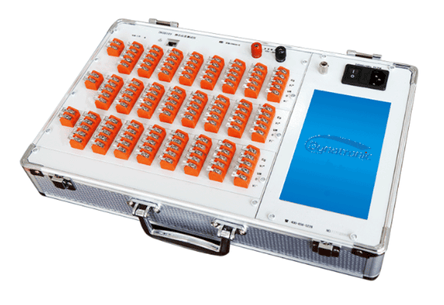Aircraft Fuselage Load Testing for Structural Integrity
January 2024 - A university research team conducted comprehensive load testing on an aircraft fuselage structure using advanced measurement systems to evaluate structural performance under various loading conditions.
Test System Configuration:
Primary equipment: 2 × SE-864U Static Stress-strain Testing and Analysis Systems
Measurement devices:
Strain gauges (multiple types) installed at critical locations throughout the internal cabin framework
Displacement transducers (LVDTs or similar) positioned beneath key sections of the fuselage
Load application system for controlled loading scenarios
Test Methodology:
1. Instrumentation Layout:
Strain gauges arranged in strategic patterns to capture:
Longitudinal and circumferential stresses
Bending and torsional deformation
Stress concentrations at structural joints
Displacement measurement points selected to monitor:
Overall fuselage deflection
Local deformation at load introduction points
2. Loading Protocol:
Applied incremental static loads representing:
Normal operational conditions
Design limit loads
Ultimate load cases (if applicable)
Multiple loading configurations to simulate:
Symmetrical and asymmetrical load distributions
Critical load paths
3. Data Acquisition:
Synchronized collection of strain and displacement data
Continuous monitoring during load application and removal
Multiple measurement cycles for repeatability verification
Data Analysis:
Processed strain data to determine:
Principal stress directions and magnitudes
Load transfer paths through the structure
Comparison with theoretical predictions
Displacement measurements used to:
Construct deflection profiles
Calculate structural stiffness characteristics
Identify any nonlinear behavior
Key Outcomes:
Structural performance validation under design loads
Identification of critical stress areas requiring potential reinforcement
Experimental verification of finite element analysis models
Database of strain/stress distributions for future reference
Technical Advantages:
The SE-864U system provided:
High-accuracy static strain measurement capability
Excellent long-term stability for extended tests
Synchronized multi-channel data acquisition
Comprehensive measurement approach enabled:
Full-field structural response characterization
Detailed load path analysis
Validation of structural modeling assumptions
Applications:
Aircraft structural certification support
Design optimization for weight reduction
Maintenance and repair evaluation
Educational demonstration of aircraft structural behavior
This test series provided critical experimental data supporting both academic research and practical aircraft development objectives. The methodology demonstrates a robust approach to full-scale aircraft structural testing using advanced but cost-effective measurement techniques.


